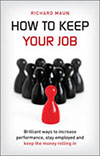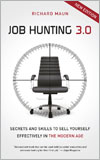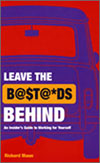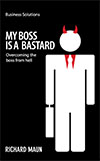better business blog
Tips and stories to add value to you and your organisation

Hold The Boundary
“Leadership is a complex art form which requires years of experience, the reading of at least 100 books and copious amounts of training to get right.”
Discuss, in not more than 500 words.
Well… we can do it 3 words. Hold the boundary.
Simple.
There’s a neat little model in Transactional Analysis, called The Structure Highway (ref Jean Ilsley Clarke). The model is designed to aid parents and, given that parenting is one of the purest forms of leadership, it translates happily across into organisational life.
Imagine a road stetching out infront of you. You’re the only car there and can choose to drive on either side, or to slalom if you like.
One side of the road represents all the non-negotiable rules present in your organisation. These include the rules you set up as a leader. When you’re driving on this side you are upholding these rules. Well done you.
The other lane is for all the negotiable items. These tend to be tasks we set, deadlines and styles of report writing, for example. When we drive in this lane we are collaborating and discussing things with our staff. All good!
However, we also have to imagine that we are not limited to driving on the road …we can diverge wildly to the left and right.
If we leave the non-negotiable lane, and hack off into the scrub, we give ourselves and our passengers (our staff) a bumpy and unpleasant ride. Behaviourally we have become dictatorial and are laying down inappropriate and over-bearing rules. Expect the passengers to get out at the earliest opportunity!
If we veer off on the other side, away from the negotiable lane, then we are entering a world of chaos. Staff set their own rules, ignore ours and do what they like, when they like. If we take a look around us we will find we are not even driving any more and are being driven. Not good.
Holding the boundary means keeping our metaphorical car of leadership on the road and sticking within the lanes.
Clear and rigid boundaries make people feel safe. Porous boundaries mean that people don’t know what to expect, or are treated differently to their colleagues. This creates suspicion and resentment.
Holding the boundary can be hard work. Witness a parent arguing with a teenager that smartphones are not allowed out during mealtimes, and you will instantly know what I mean. However, without clear boundaries and consequences for breaching them, people tend to be less able to operate effectively in teams and tend not to give us their best work.
So, this week, we can define where the boundaries are and police them with fairness and gritty resolve.
We can all be great leaders.
Next week: The Kennedy Aspect
e-publishing
Click icon for details


recent posts
browse archive
books
Click cover to view details on Amazon

How to Keep Your Job
Brilliant ways to increase performance, stay employed and keep the money rolling in
Published 2011 Marshall Cavendish
208pp

Job Hunting 3.0
Secrets and skills to sell yourself effectively in the Modern Age
Published 2010 Marshall Cavendish
260pp

 RSS
RSS


